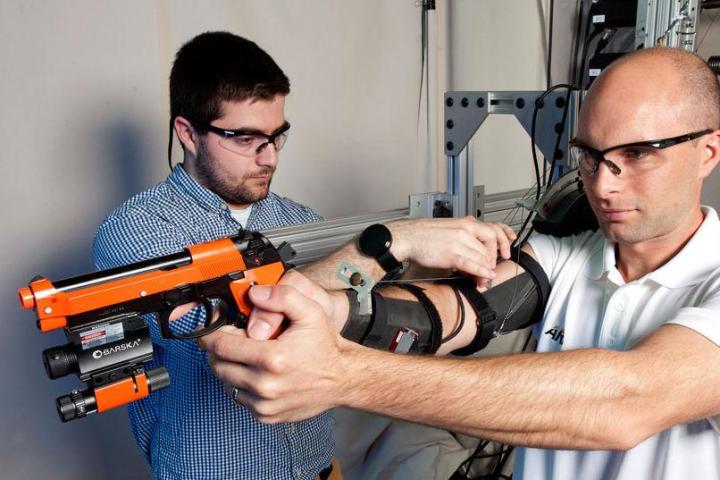
Dan Baechle, a mechanical engineer at the US Army Research Laboratory, has developed a new arm-mounted exoskeleton that does just that. The system, dubbed Mobile Arm eXoskeleton for Firearm Aim Stabilization, or MAXFAS, definitely isn’t the first device of its kind, but it’s got a few tricks up its exosleeve that other exoskeletons don’t.
Unlike other systems, which can steady a shooter’s arm or hand by restricting movement or degrees of freedom, MAXFAS can actively reduce involuntary tremors while allowing larger voluntary aiming movements. In other words, it allows the wearer to wave their arm around freely, but also provides stability when it comes time to point and pull the trigger.
“Imagine the benefits of using an image stabilizer for a camera when the photographer is capturing action shots,” Baechle said in an interview with the US Department of Defense. “MAXFAS provides that level of stability for your entire arm during the critical moments of aiming and shooting. The MAXFAS exoskeleton senses the tremors in your arm that you probably don’t even realize exist. The control algorithms for the device dramatically reduce the shake without locking your arm in place.”
It’s just a prototype at this point, and still isn’t battlefield-ready quite yet, but MAXFAS is evolving quickly. “Right now, MAXFAS is a developmental test system,” Baechle explains. “Visually, MAXFAS is a large frame with motors on it. The exoskeleton is tied to the motors in a laboratory and tethered to a power supply. The device is not mobile, but the idea is that we could do the basic experiments here at ARL that would allow for a more mature mobile system that soldiers could use routinely to improve their shooting.”
Eventually, the goal is to create a completely untethered MAXFAS unit that could be worn by soldiers on the battlefield, actively improving shooting performance and making missed shots a thing of the past.
Editors' Recommendations
- Security robots could be coming to a school near you
- Meet the game-changing pitching robot that can perfectly mimic any human throw
- This LG robot could soon be serving your restaurant meal
- This spherical, BB-8 style robot is built to explore lava caves on the moon
- Exoskeletons with autopilot: A peek at the near future of wearable robotics




